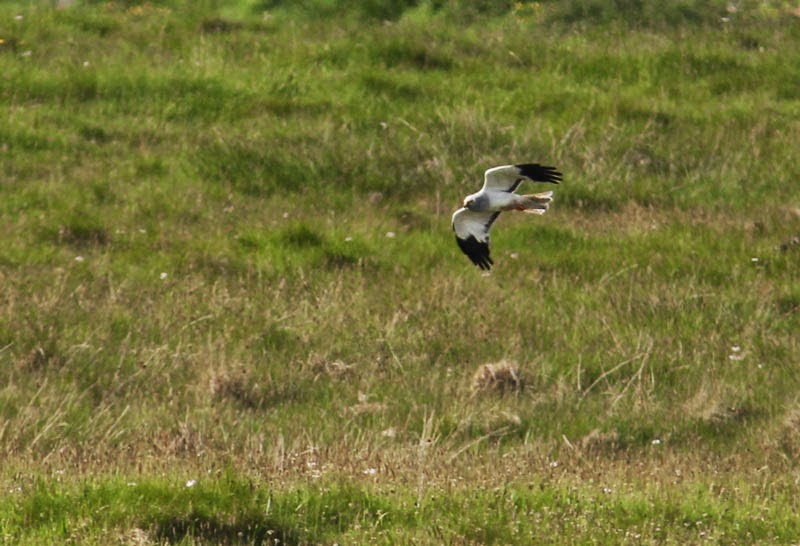Or to be more precise, Berneray, North Uist, Benbecula and South Uist for our holidays last week.
Most years we venture up north into Scotland somewhere or other, so have covered most corners at sometime, but we have never travelled to this far flung western corner of Europe. A couple of years ago we were at Uig ( Oo-ig) on Skye and could see Harris over on the horizon, and vowed that one day we will travel across the Minch.
We travelled up to the Cluanie Inn last Friday to stay over night so we only had a reasonable drive up to the ferry in the morning. Saturday was a glorious day, with clear blue skies and a nice cool breeze to keep the midges at bay. There wasn't much to be had around the Inn during our short stay but I did find a nice
Northern Eggar caterpillar...
 |
| Northern Eggar |
The crossing was easy but I was disappointed in the lack of birds and cetaceans considering the conditions. I saw one
Storm Petrel briefly and a single
Manx Shearwater plus a few auks including nice
Black Guillemots distantly from the harbour.
After disembarking at Lochmaddy, North Uist we headed towards our cottage for the week. On route, almost the first bird seen was a male
Hen Harrier flying alongside the car. At the cottage, at least 3
Corncrakes were 'crexing' just over the garden wall, but were invisible in dense iris and grass vegetation.
 |
| Our cottage - An t-Seann Dachaidh. No I dont either... |
Sunday dawned to rain and dark skies, oh dear is this the week ahead, we wondered. Regardless, I was up early for a drive around near the RSPB Balranald reserve. The rain dampened things a bit, but 2
Corn Buntings, Twite and a male
Merlin were noteworthy. On the lochan opposite the house were 2
Common Sandpipers and a
Common Gull with 2 chicks, visible from the living room window. Our own live Springwatch!
Around the house ( and everywhere really) were lots of
Starlings. They looked very dark, particularly the juveniles, reminding me of the Shetland birds?
 |
| 'Hebridean' Starlings. |
On Monday the rain was still 'spotting' and it was dreary looking outside. It became brighter in the after noon.
Driving north along to Solas ( the site of the main shop - the 'Co-op of Sollas') 2
Short eared Owls hunted near the road, the first of many sightings.
 |
| SEO |
In the afternoon we walked around Aird an Runair, the famous seawatching spot. What a place. A rocky penninsular out into the atlantic ocean, it must be fantastic here when birds are moving. Today they weren't.
On the shore were lots of
Sanderling, Dunlin and
Turnstone and nearby, a first summer
Glaucous Gull.
 |
| Glaucous Gull |
Many waders stood guard over chicks in every field,
Redshank,
Lapwing and
Oystercatchers everywhere.
Wheatears flitted between the rocks as
Meadow Pipits and
Skylarks displayed and sang over head.
Eiders and
Arctic Terns were common but a
Sparrowhawk surprised me a bit, there are hardly any trees here. A
Red Admiral flew around the nettles outside the information centre.
After the walk, it was time to check out the famous 'committee road' for raptors. The sun was shining now so they might be keen to get on the wing. First up, a ringtail
Hen Harrier crossed the road while a
Short eared Owl hunted nearby. 2
Buzzards soared above. Further down back on the main road, at Griminish, a watch had been set up on a
Golden Eagle nest. 2 adults were sat nearby and the chick could be seen. Most amazing was the fact that the nest was on the ground, sat atop a small hill of heather.
2
Ravens and a
Golden Plover were in the coastal fields.
Back in the house for the evening watching 'Springwatch', a male
Hen Harrier flew just over the road hunting the field opposite. What a bird to get from inside the living room! It was mobbed away without success. As darkness fell at 11pm, 5
Corncrakes were still calling....













































